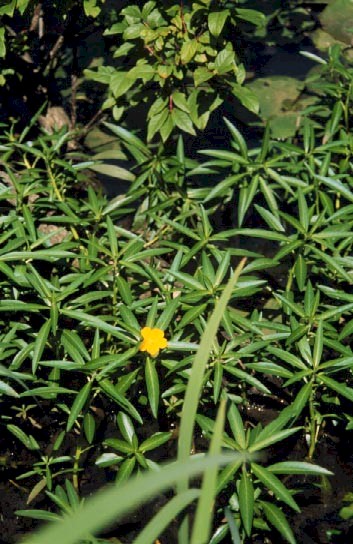
Ludwigia spp.
Plants
Three species of Ludwigia (Creeping Water-Primrose, L. grandiflora, (Michx.) Greuter & Burdet(; Large-flowered Water-Primrose; L. hexapetala (Six-Petaled Water-Primose (M. Michelli), and L. peploides Floating Water-Primrose ((Kunth) P. H. Raven) are native to the southeast US, (L. peploides), and South and Central America. These plants are creeping emergents, growing in a sprawling fashion, with some emergent leaves and conspicuous 5-petaled yellow flowers. (Ludwgia hexapetala occasionally has 6.). These species are difficult to distinguish, and from a management point of view, are usually treated collectively, These plants have been widely introduced as ornamentals, but there is some uncertainty about their native status. Ludwigia peploides has been treated by different authors as native, 'doubtfully native', or introduced in the southeastern US. However, it was first found in the Delaware River on a dry ballast pile in 1866, and around Chesapeake Bay before 1945. It is locally abundant in the tidal fresh Potomac, In the San Francisco Bay Delta, L. peploides was first collected around 1945 and along the Columbia River in 1969. Ludwigia grandiflora and L. hexapetala are more clearly introduced from South and Central America. Ludwigia spp. regarded as highly invasive, creating mats of dense foliage in the San Francisco Bay Delta, Columbia River sloughs, and in lakes and rivers in the US, Europe, Australia. and New Zealand. In the Sacramento-San Joaquin Delta, it is a competitor with the native floating plant, Water Pennywort (Hydrocotyle umbellata), and has replaced it in some areas. Genetic studies in the Delta indicate that Ludwigia spp. primarily reproduce clonally, complicating mechanical control. Insects from South America are being studied for potential biocontrol introductions in the Delta, and other bodies of the water in other parts of the world.